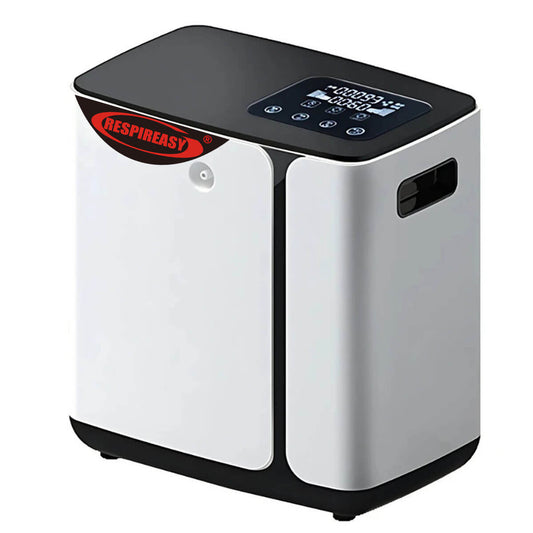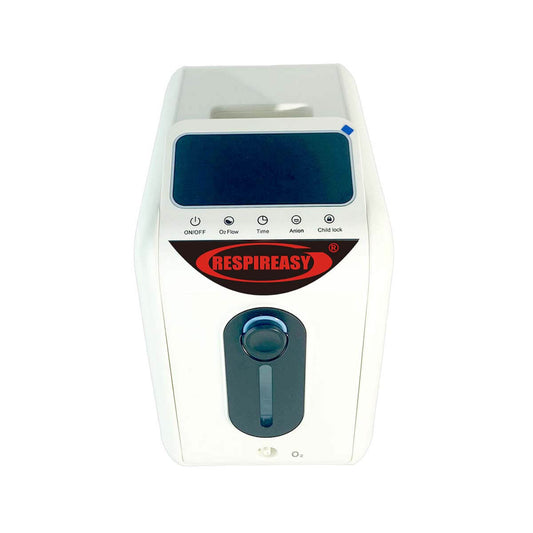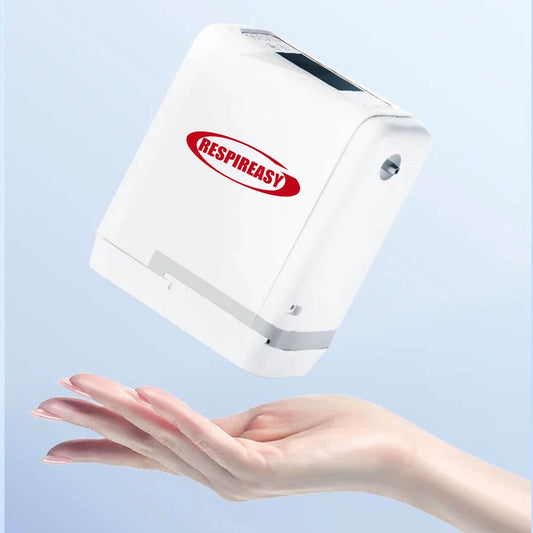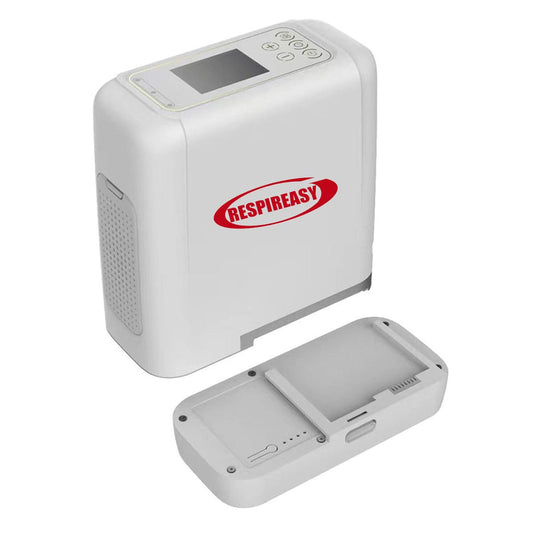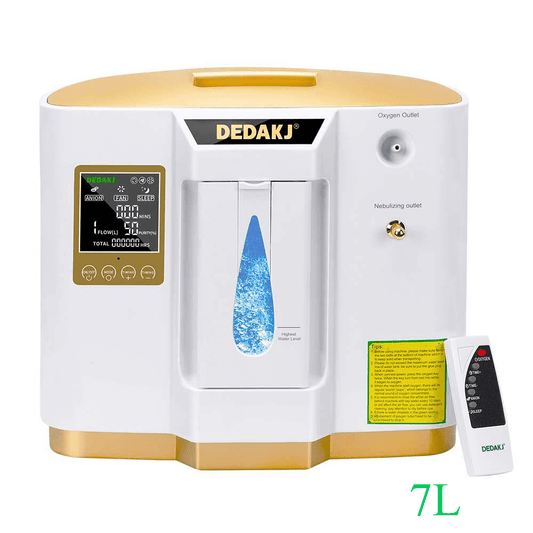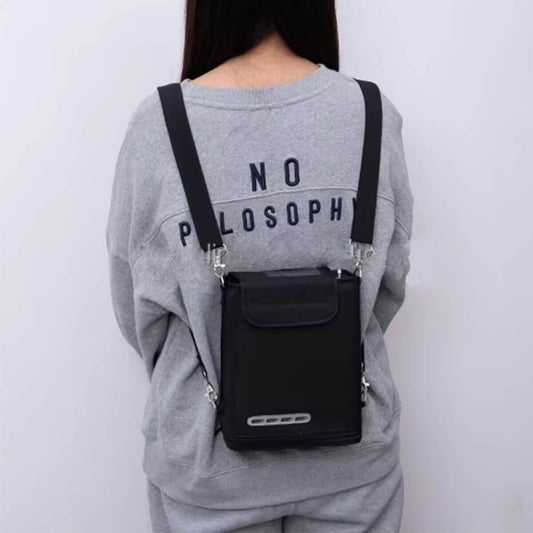Recommended household oxygen concentrator, one article will help you understand DEDAKJ oxygen concentrator

For people who need long-term oxygen inhalation, it is indeed convenient to buy a home continuous flow rate oxygen concentrator. However, there are many brands and types of low noise oxygen concentrators on the market. How to choose?
Today I will share with you my experience in purchasing oxygen concentrators based on some basic knowledge about household oxygen concentrators.
Table of contents:
01. Introduction to knowledge points about household oxygen concentrators
02. Key points for purchasing a home oxygen concentrator
03. Practical knowledge about household oxygen concentrators
04. Recommendation of household oxygen concentrator
05. Daily maintenance of household oxygen concentrator
1. Knowledge points about household oxygen concentrators
Oxygen concentrators are generally divided into two types: health-care type and medical type, which are helpful for people suffering from respiratory diseases and cardiovascular diseases. It can relieve symptoms such as insufficient blood supply to the brain, chest tightness, and dizziness caused by hypoxia.
Buyers of oxygen concentrators are recommended to choose oxygen concentrators with molecular sieve oxygen production technology.
Molecular sieve oxygen production refers to using air as raw material and molecular sieve as adsorbent at normal temperature, through a cycle process of pressure adsorption and decompression analysis, to separate oxygen from the air in a purely physical way.
The concentration of oxygen separated in this way reaches the national standard of 93%+-3%.

What is the oxygen output of the oxygen concentrator?
When choosing an oxygen concentrator, the product introduction will be marked: 1 L oxygen concentrator, 3 L oxygen concentrator, 5 L oxygen concentrator. What does it mean specifically?
In fact, it means the maximum oxygen flow rate of the oxygen generator per minute under the premise of ensuring the oxygen concentration.
The core components of the oxygen concentrator include: molecular sieve compressor
Molecular sieves are related to the oxygen purity and efficiency of the oxygen generator. Molecular sieves are divided into two camps:
Lithium sieve
sodium sieve
The characteristic of sodium sieve is that it can produce oxygen quickly, but it is afraid of moisture. Moisture will cause the molecular sieve to fail.
The oxygen production efficiency of lithium screen is not as fast as that of lithium screen, but it is not so sensitive to moisture.
Most oxygen concentrators on the market currently use sodium sieves, so avoid getting wet when using them.
A good-quality oxygen generator is filled with a lot of molecular sieves, which can ensure continuous oxygen supply. On the contrary, in order to save costs, the quantity of molecular sieves in substandard products will be reduced. After a period of use, the amount of oxygen produced will gradually decrease.
2. Key points for purchasing a home oxygen concentrator
The main functional parameter of a household oxygen concentrator is the oxygen output of the oxygen concentrator, which is generally 1 liter, 2 liters, 3 liters, and 5 liters.
Those with an oxygen output of 1-2 liters are health-care types.
Those with an oxygen output of 3L or above are medical type.
The applicable groups of health-care oxygen concentrators include: pregnant women, people with mild hypoxia, and mental workers who overuse their brains.
The applicable groups of medical oxygen concentrators include: people with high blood pressure, the elderly, people with cardiovascular, cerebrovascular, and respiratory diseases, such as emphysema, pulmonary heart disease, asthma, and other people who are highly dependent on oxygen.
Especially for people with emphysema, it is strongly recommended to purchase an oxygen concentrator with an oxygen output of 5 liters or more, so as not to save money and cause more serious consequences.
There is also an 8-liter oxygen concentrator, which mainly serves patients who need long-term oxygen inhalation. Such people generally cannot be separated from oxygen for a long time and are basically not used at home.
In addition to oxygen production, you also need to consider the following factors when purchasing a home oxygen concentrator:
- Oxygen concentration adjustment
- Continuous oxygen supply time
- Noise
Oxygen concentration is the most important indicator of an oxygen concentrator. You must buy a machine with an oxygen concentration above 90%. It is best to choose an oxygen concentrator that can adjust the oxygen concentration, so that the oxygen concentrator has a wider scope of application.
Also pay attention to the continuous oxygen supply time. If it is used by people with cardiovascular and cerebrovascular diseases, it is recommended to choose a machine that can continuously supply oxygen for 24 hours.
The oxygen concentrator will produce noise when it separates oxygen. Pay attention to choosing a machine with good sound insulation and low noise to help patients rest.

3. Common sense for using oxygen concentrator
01. When is the best time to inhale oxygen?
Half an hour after a meal and before going to bed at night, the human body's blood oxygen saturation is relatively low, and inhaling oxygen can replenish the oxygen concentration.
As the saying goes, people feel weak after eating. Due to frequent gastrointestinal motility after a meal, blood oxygen will preferentially tilt to the digestive organs, resulting in less blood supply to other organs and increased burden on the heart. People with cardiovascular disease are more effective after taking oxygen. good.
Another good time to inhale oxygen is before going to bed, because cardiovascular diseases usually occur late at night and early in the morning. Inhaling oxygen before going to bed can effectively prevent the occurrence of cardiovascular diseases.
Inhaling oxygen also has a sedative effect, so you can sleep better if you inhale a little before going to bed.
02. The duration of each oxygen inhalation
The number of oxygen inhalations and the duration of each oxygen inhalation vary from person to person. People with lung diseases are recommended to continue low-flow oxygen inhalation every day, specifically 2-3 liters per minute. If the situation is more serious, the oxygen output per minute needs to be adjusted to 5 liters. Of course, the specific situation of such people must be followed by the doctor's advice.
Pregnant women should control their oxygen intake to 2-3 times a day, half an hour each time, and adjust the oxygen output to about 1 liter per minute.
To relieve fatigue, the oxygen output is set at 1-2 liters for 30 minutes each time.
Therefore, when buying an oxygen concentrator, it is more practical to choose a machine that can adjust the oxygen output.
03. Pay attention to heating and humidification when inhaling oxygen.
In order to avoid inhaling dry and cold oxygen to irritate and damage the airway mucosa, the inhaled oxygen should be heated and humidified through a humidification bottle and necessary heating device. Today's oxygen concentrators generally have this function, just follow the instructions.

4. Recommendation of oxygen concentrator
I sorted through the oxygen concentrators that can be purchased online and have guaranteed quality, and I recommend the DEDAKJ oxygen concentrator.
DEDAKJ Oxygen Concentrator is a manufacturer specializing in the development and production of respiratory medical equipment. It is very professional in oxygen concentrators. Many hospitals use its products. Focusing on the research and development of household health products, it currently focuses on health-care oxygen concentrators of about 3 liters, which are a good choice for pregnant women or elderly parents.
If you want to buy a 5-liter medical standard oxygen concentrator, the following one is highly recommended. It can guarantee a stable oxygen concentration of 90% and can operate stably for 30,000 hours. The operating noise is only 43dB, which is very quiet and will not disturb patients.
5. Daily maintenance of household oxygen concentrators
As mentioned earlier, oxygen concentrators mainly rely on molecular sieves. The characteristic of molecular sieves is that they are afraid of moisture. Therefore, the best way to maintain an oxygen concentrator is to use it regularly. The more you use it, the less likely it will break.
If it is not used for a long time, it will be easily affected by moisture and the activity of the molecular sieve will be reduced.






























